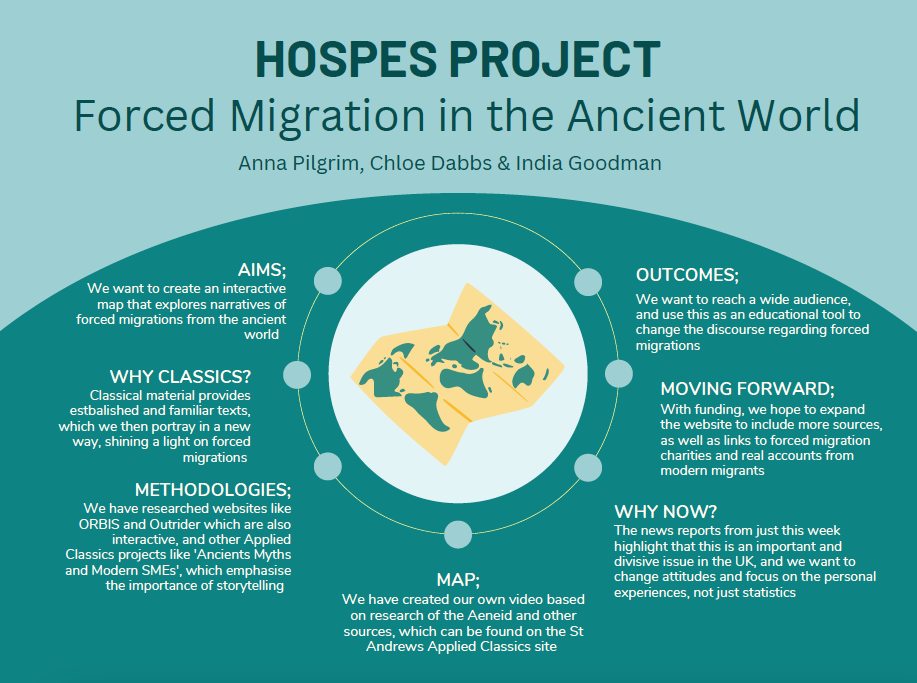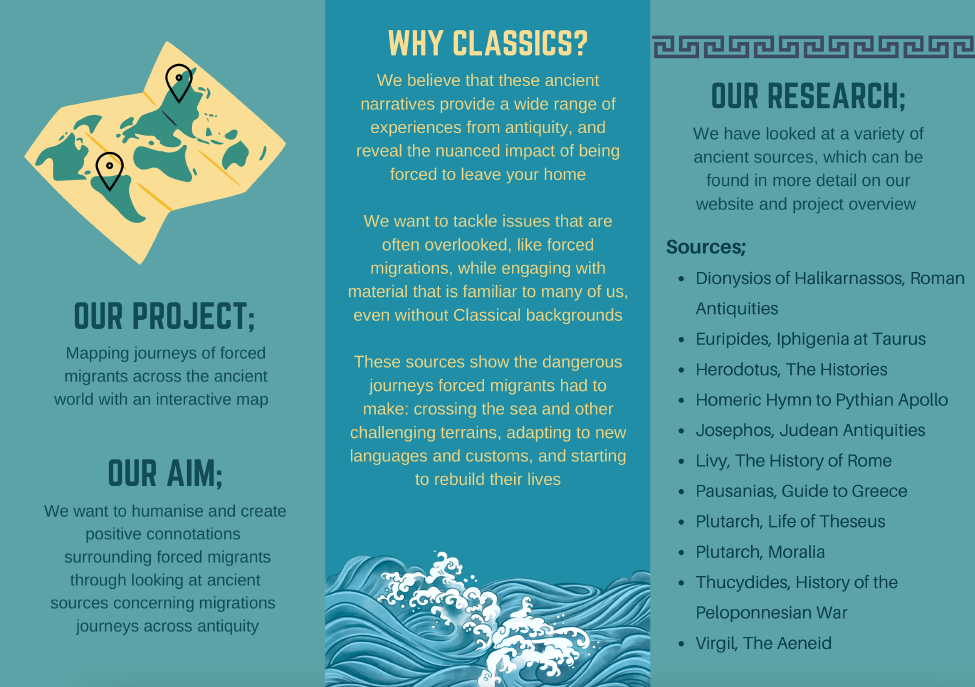The Hospes Project
In 2022, a group of three students, Chloe Dabbs, India Goodman and Anna Pilgrim, developed The Hospes Project. The project uses the power of storytelling and the ‘draw’ of Classical antiquity to raise awareness about modern migration experiences and to address toxic rhetoric and anti-immigrant sentiments in the UK and beyond.

You can explore our project in full on the website we have created. As we explain there:
As part of our Applied Classics course, we have been trying to map ancient forced migration journeys across antiquity. We want to create an interactive map that allows our users to engage with literary and material evidence from the ancient world through a visual journey, showing the dangers that ancient migrants faced when travelling across the Mediterranean… Through combining ancient sources with our own carefully crafted narratives, we hope that these tales capture your interest and encourage you to reflect on forced migration journeys, ancient and modern.
https://ancientworldforcedmigration.wordpress.com
Our project recognises and aims to exploit the ‘caché’ of Classics in the modern world, by drawing people into discussions about modern migration experiences via stories from antiquity. Our research has fallen into three parts: we have researched ancient experiences of migration, which have fed into the fictional stories which we have crafted for our storytelling; we have researched modern experiences of migration, including conducting interviews with people who have lived experience of forced displacement, to ensure that our storytelling is informed by real life and reflects what real people want us to know; and we have researched storytelling methodologies and tools, which have helped us to design our interactive map.

Our interactive map not only allows the user to plot a forced migration journey across the ancient Mediterranean, but it also encourages them to think about the struggles faced by migrants in any era, from language barriers to acquiring different types of transport, engaging with these ancient narratives in a new and more personal way.
The idea behind the map is that it is a visual tool that illuminates certain problems that may not be as clear or focused in ancient texts and sources, trying to reinforce the arduous and often terrifying routes people were forced to take when fleeing war, natural disasters and other situations. We want to take familiar tales and texts, but present them in a new and interactive form, using an easy to use programme which allows the user to input various locations and choose which narratives they want to explore.
One of the benefits of studying the Classical world is that the stories and events from antiquity are not exclusive to the ancient world, but we see echoes of them in our own time. We can still connect and empathise with these tales and people, and can see how their journeys played out. We hope that our ancient narratives help people visualise and engage with experiences of migration today.
You can find our more about our project by looking through our brochure and listening to our presentation below: